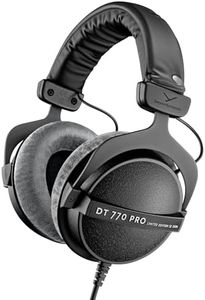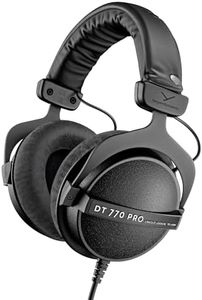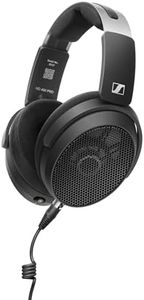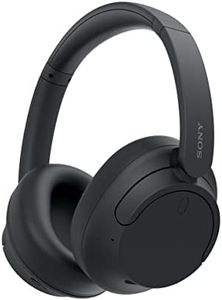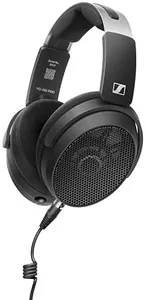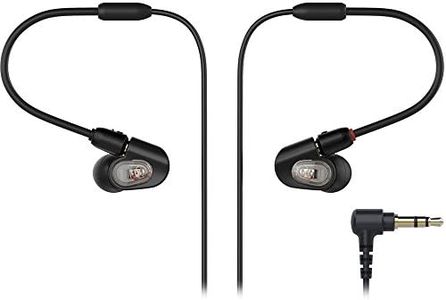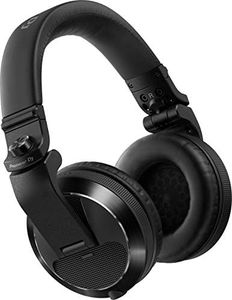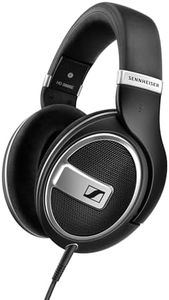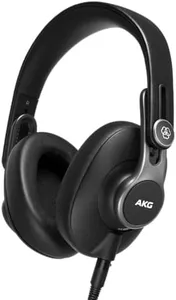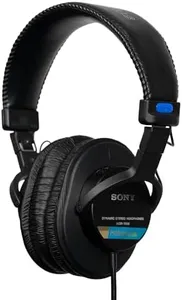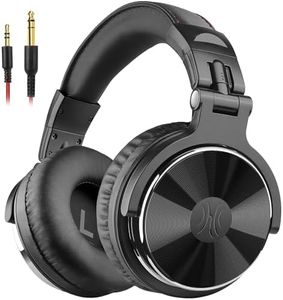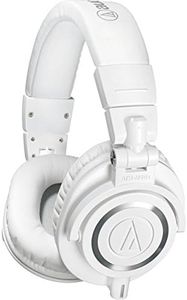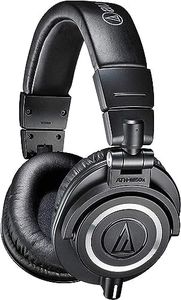We Use CookiesWe use cookies to enhance the security, performance,
functionality and for analytical and promotional activities. By continuing to browse this site you
are agreeing to our privacy policy
10 Best Pro Studio Headphones
From leading brands and best sellers available on the web.Buying Guide for the Best Pro Studio Headphones
Choosing the right pro studio headphones can make a huge difference in how you experience and produce music. Studio headphones are designed to deliver accurate, detailed sound so you can hear every nuance of your recordings or mixes, without the coloring often found in consumer headphones. When picking the best headphones for your needs, think about what you’ll primarily use them for—whether it's recording, mixing, or simply appreciating high-quality audio. Consider how comfortable they are for long sessions, how well they isolate sound, and how true-to-life the sound is. Taking the time to understand key features will help you find a pair that truly matches your studio requirements.Type (Closed-back vs. Open-back)The type of headphone refers to whether they are closed-back or open-back. Closed-back headphones have a sealed back, which helps to isolate sound and prevent audio from leaking out. This is especially important for recording, as it stops the microphone from picking up unwanted sounds from the headphones. Open-back headphones have ear cups that allow air and sound to pass through, which helps create a more natural, spacious audio experience. These are typically more suitable for mixing and critical listening in quiet environments. Think about whether you'll need isolation (closed-back) or want a more open, transparent sound (open-back) based on your primary studio tasks.
Frequency ResponseFrequency response is the range of audio frequencies the headphones can reproduce, often listed in Hertz (Hz). A wider range means the headphones can potentially play deeper bass and crisper highs. Most studio headphones offer a range wider than human hearing (20Hz-20kHz), but what's more important is how balanced and flat the response is—not boosting any part of the frequency spectrum. If you need to catch every detail for mixing or mastering, headphones with a flat and extended response are crucial. If you're tracking or recording, a slightly colored sound may be tolerable.
ImpedanceImpedance, measured in ohms (Ω), tells you how much power the headphones need to perform well. Low-impedance headphones (below 50 ohms) are easy to drive from portable devices like laptops or phones, while high-impedance headphones (often above 150 ohms) are designed for use with powerful studio equipment like audio interfaces or headphone amps. If you plan to use the headphones mainly with professional gear, high impedance may give you better performance. For casual use or portable setups, lower impedance is better.
Comfort and Build QualityComfort covers how the headphones feel during long listening sessions, including the padding on the ear cups and headband, as well as the overall weight and clamping force. Good build quality means they're durable enough to handle regular studio use. Choose headphones with soft, replaceable pads and an adjustable headband if you'll wear them for hours at a time. If you're often traveling with your gear, consider models with a rugged build and detachable cables for easier repairs and transport.
Sound IsolationSound isolation determines how much outside noise is blocked while wearing the headphones, and how much sound leaks out. Closed-back headphones generally offer better isolation than open-back ones. This is important if you're recording in the same room as a microphone or need to focus in a noisy environment. If you work in a quiet studio and mixing accuracy is more important, you might prioritize sound quality over isolation.
Cable Type and LengthThe type and length of the headphone cable affects both convenience and durability. Coiled cables can prevent tangling and are useful if you move a lot at your desk, while straight cables are lighter and less obtrusive. Longer cables give you more freedom of movement, but can be cumbersome if your studio space is small. Detachable cables are an advantage, making replacements easier if the cable wears out. Pick the style that best matches your workspace and workflow.
